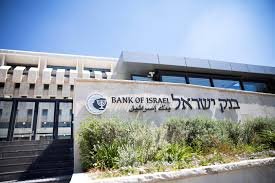Is US$18.5 Billion Finally Enough For Muslim Leaders To Tell Israel It Must Pay For Destruction Of Gaza? President Erdogan- This Is Your Moment. Not One Pound, Dinar, Rial, Riyal, Lira, Durham.
US$18.5 Billion And Counting. Will Finally Muslim Leaders Tell Israel That It Must Pay For Destruction Of Gaza?
An Important Moment For Recep Tayyip Erdogan, President Of The Republic Of Turkiye (2014- ), Who Is The Most Vocal Head Of Government Leading The Global Muslim Community About Decisions By The Government Of The State Of Israel Impacting The Residents Of Gaza.
What Will It Take For Egypt, Jordan, Qatar, Saudi Arabia, Turkiye, United Arab Emirates To Stand Together And Pledge Not One Pound, Dinar, Rial, Riyal, Lira, Durham Until Government Of The State Of Israel Uses Its US$200 Billion In Foreign Reserves To Repair First What The Israel Defense Forces (IDF) Chose To Destroy?
United States Taxpayers Should Not Contribute One Dollar. Period.
World Bank
Washington DC
2 April 2024
Damages to Physical Structures Estimated at $18.5 billion as of end January
WASHINGTON, April 2, 2024 – The cost of damage to critical infrastructure in Gaza is estimated at around $18.5 billion according to a new report released today by the World Bank and the United Nations, with financial support of the European Union. That is equivalent to 97% of the combined GDP of the West Bank and Gaza in 2022.
The Interim Damage Assessment report used remote data collection sources to measure damage to physical infrastructure in critical sectors incurred between October 2023 and end of January 2024. The report finds that damage to structures affects every sector of the economy. Housing accounts for 72% of the costs. Public service infrastructure such as water, health and education account for 19%, and damages to commercial and industrial buildings account for 9%. For several sectors, the rate of damage appears to be leveling off as few assets remain intact. An estimated 26 million tons of debris and rubble have been left in the wake of the destruction, an amount that is estimated to take years to remove.
The report also looks at the impact on the people of Gaza. More than half the population of Gaza is on the brink of famine and the entire population is experiencing acute food insecurity and malnutrition. Over a million people are without homes and 75% of the population is displaced. Catastrophic cumulative impacts on physical and mental health have hit women, children, the elderly, and persons with disabilities the hardest, with the youngest children anticipated to be facing life-long consequences to their development.
With 84% of health facilities damaged or destroyed, and a lack of electricity and water to operate remaining facilities, the population has minimal access to health care, medicine, or life-saving treatments. The water and sanitation system has nearly collapsed, delivering less than 5% of its previous output, with people dependent on limited water rations for survival. The education system has collapsed, with 100% of children out of school.
The report also points to the impact on power networks as well as solar generated systems and the almost total power blackout since the first week of the conflict. With 92% of primary roads destroyed or damaged and the communications infrastructure seriously impaired, the delivery of basic humanitarian aid to people has become very difficult.
The Interim Damage Assessment Note identifies key actions for early recovery efforts, starting with an increase in humanitarian assistance, food aid and food production; the provision of shelter and rapid, cost-effective, and scalable housing solutions for displaced people; and the resumption of essential services.
About the Gaza Interim Damage Assessment Report
The Gaza Interim Damage Assessment report draws on remote data collection sources and analytics to provide a preliminary estimate of damages to physical structures in Gaza from the conflict in accordance with the Rapid Damage & Needs Assessment (RDNA) methodology. RDNAs follow a globally recognized methodology that has been applied in multiple post-disaster and post-conflict settings. A comprehensive RDNA that assesses economic and social losses, as well as financing needs for recovery and reconstruction, will be completed as soon as the situation allows. The cost of damages, losses and needs estimated through a comprehensive RDNA is expected to be significantly higher than that of an Interim Damage Assessment.
LINK TO WORLD BANK 32-PAGE REPORT IN PDF FORMAT
LINK TO COMPLETE ANALYSIS IN PDF FORMAT
LINKS To Related Analyses


